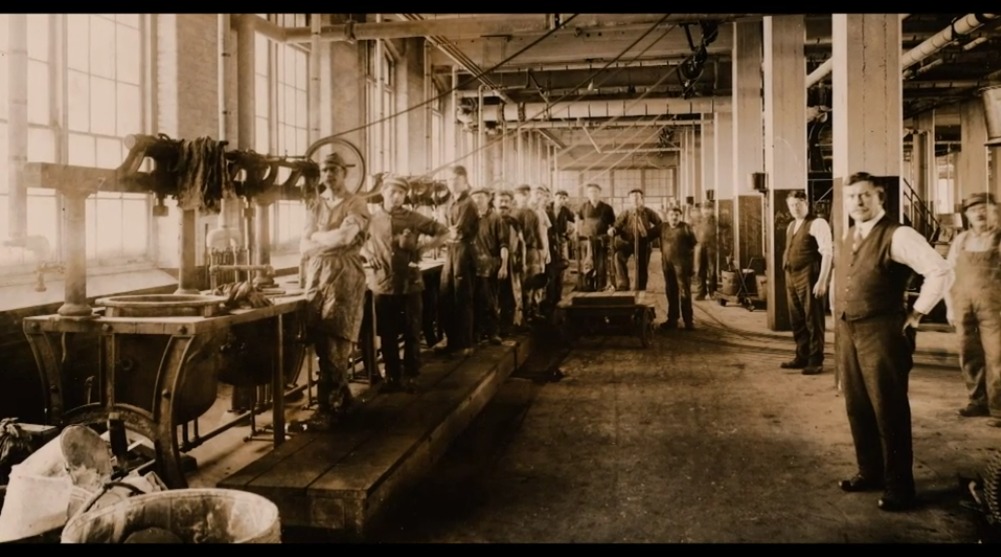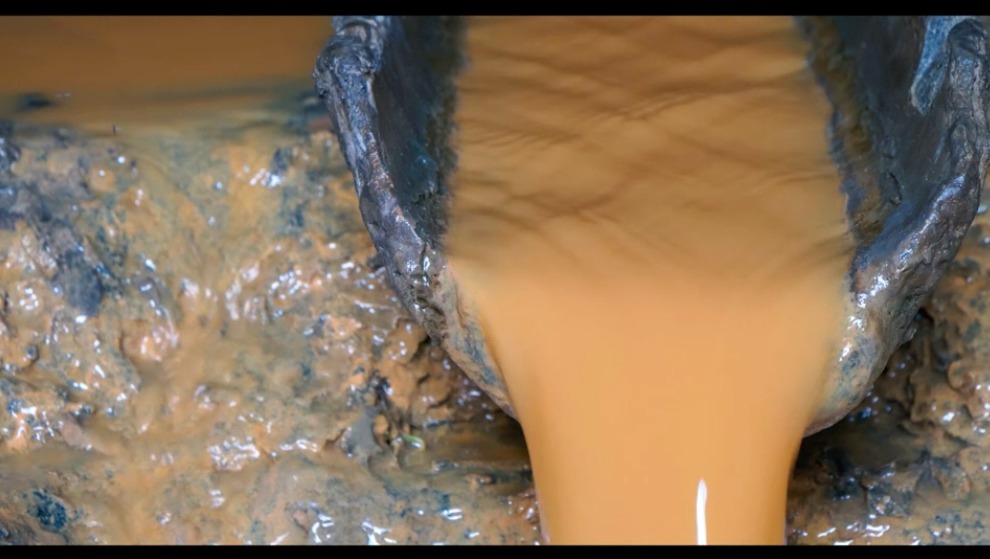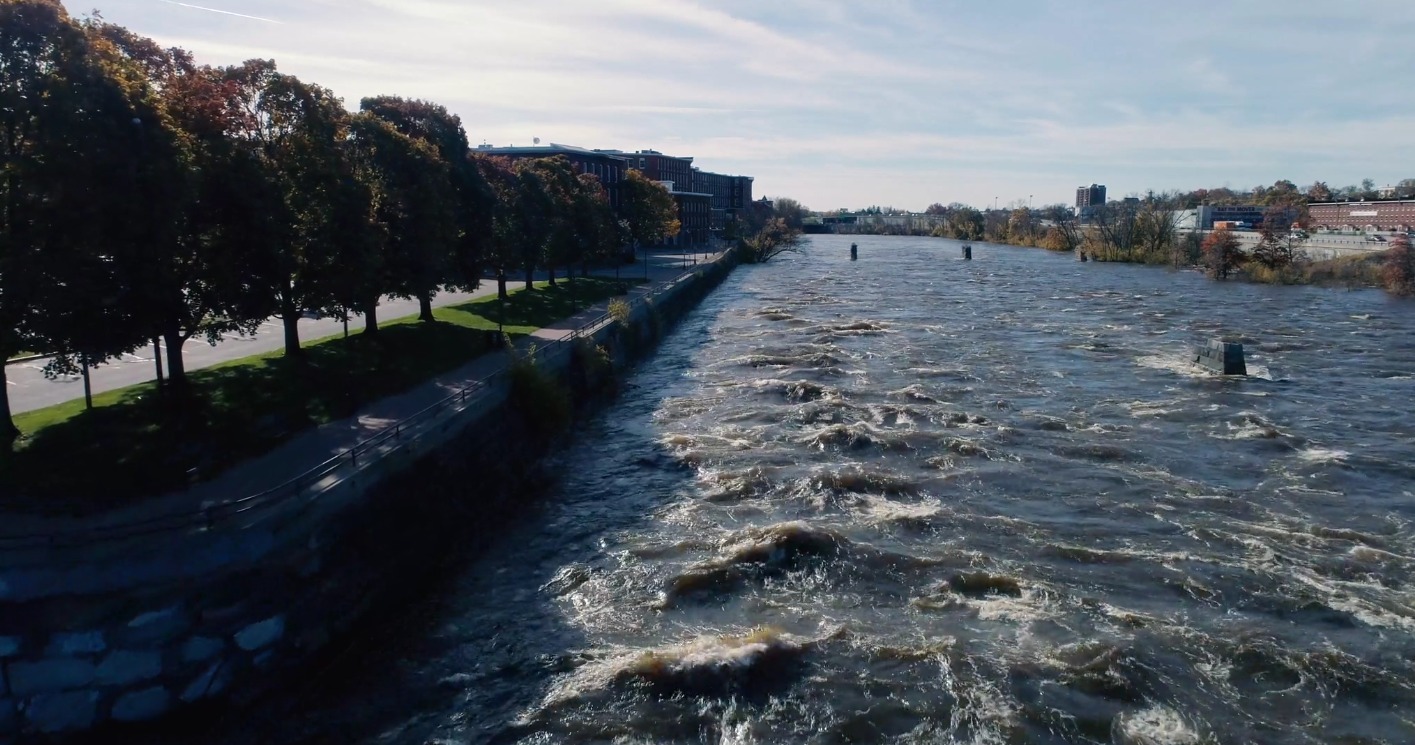
Mní wičhóni -“Water is Life”
On Saturday, September 26, the Society for the Protection of New Hampshire Forests hosted 72 members online for their 119th Annual Meeting and a screening of their new film “The Merrimack: River at Risk.”
The film was co-produced and directed by conservation photographer and filmmaker Jerry Monkman. It follows conservationist Leah Hart as she travels up and down the Merrimack Valley interviewing people who depend on the river for their work, their water, and their joy. In the process she uncovers the many ways the Merrimack River impacts the lives of people in cities and towns along its path and the things that threaten its health.
Monkman and his team spent about 40 days filming over the four years. The footage included 30 hours of interviews, film of a flight covering the length of the river from Newburyport to Franklin, and hours of drone footage.
Forest Society President Jack Savage co-produced the film. He was concerned that the Merrimack River had fallen into the background for a lot of people. When American Rivers named the Merrimack one of America’s Most Endangered Rivers of 2016 he approached Monkman about working on the project. “We chose to use a documentary film to raise awareness, because video has emerged as a dominant medium in the online world and would be the best way to reach our target audience,” said Savage.
When asked why the Forest Society was so concerned about the health of the river he pointed to the origins of the organization. In 1901 the Society for the Protection of New Hampshire Forests was created to address clear-cutting of trees in the White Mountains.

The loss of tree cover caused uneven river flow, punctuated by floods and droughts. Rain and snowmelt on bare ground filled the river with silt that caused changes in the hydraulics of the water which impacted the efficiency of water-powered turbines in the textile mills in the lower Merrimack Valley.
Because the Merrimack River is a navigable body of water it was determined that Congress had the ability to intervene and passed the Weeks Act in 1911. It allowed the use of federal funds to purchase land for conservation and in 1914 the White Mountain National Forest was established.
“The Forest Society was founded on protecting a river through land protection,” said Savage. He added, “ Protecting forests is the inexpensive way to protect water quality.”
Water Quality Matters
Formed by the marriage of the mountain water of the Pemigewasset and the lake water of the Winnipesaukee Rivers, the Merrimack River winds its way 117 miles into Southern New Hampshire and Massachusetts and out into the Gulf of Maine. It is the fourth largest watershed in New England and covers more than 5,000 square miles of land that drains into the Merrimack River and its tributaries. Along the way it runs through the center of Manchester like an artery.
For 10,000 years, ever since the glaciers retreated, the river has been the lifeblood of the people living along its shore. It was an important byway for the indigenous people of the valley who gathered at the Amoskeag Falls to harvest salmon, shad, alewife, and lamprey eels.
Early European settlers also relied on the Merrimack for food and transportation. Every spring men gathered on the rocks at Amoskeag Falls to catch fish, which they dried and brought home to their farmsteads. Giant trees were harvested in the forests of New Hampshire and floated to Newburyport to be fitted as ship masts or sent back to England. Barges carrying potash downstream returned with glass, paint, sugar and other goods.
Before long, the power of the Merrimack was harnessed to run acres of machinery making miles of cotton textiles in Manchester, Nashua, Lowell, and Lawrence. Manchester’s Amoskeag Mills became the largest producer of cotton textiles in the world.

Industrialization took a heavy toll on the river. More mills and increased population dumped tons of industrial and human waste into the river. By 1972, when the Clean Water Act was passed, the Merrimack was one of the 10 most polluted rivers in the country.
Mitigation efforts and the decline of manufacturing significantly reduced pollution entering the river. Today most of the river north of the Massachusetts border is considered a class B waterway, meaning that it is suitable for swimming, boating, and fishing.
While considerable progress has been made, continuing pollution and pressures from development along the river caused the US Forest Service to declare the Merrimack River Watershed the most threatened in the nation in terms of development in 2010.

Forests along the edges of the river and throughout the watershed act as filtration buffers that prevent pollution, in the form of runoff from lawns, farms, cities, parking lots and highways, as well as leachate from septic systems, from reaching the waterways. Industrial pollutants such as PFAS and PFOA have also emerged as significant contaminants in surface water and underground aquifers.
Currently, much of the land adjacent to the river is forested, but most of these areas along the Merrimack are privately owned and pressure to develop will likely cause the loss of some of this buffer. Between 1990 and 2010 about 100,000 acres of forestland in the watershed was lost to development.
Other areas of concern in the Forest Service report were threats to water quality and loss of habitat for at-risk species. The Merrimack River remains critically important to migratory fish like shad, and the watershed supports at least 75 state- and federally-listed endangered species, including bald eagles.

Stormwater management represents another significant risk to water quality. Many of the cities along the Merrimack, including Manchester, have combined sewer and stormwater pipes. Normally they are separate, but during heavy rainstorms, the systems are overwhelmed and wastewater gets mixed into the stormwater and flows into the river as untreated sewage. These extreme weather events are becoming more frequent due to climate change.
Currently, 45 percent of the city’s sewer pipes are combined. The city recently entered into an agreement with the EPA to spend $231 million over the next 20 years to reduce sewage discharge into the Merrimack from the Combined Sewer Overflow events.
About 600,000 people in Lowell, Lawrence, Tewksbury, Methuen, and Andover, in Massachusetts and Nashua, NH, rely on the Merrimack River for their drinking water. More development will mean greater demand.
Manchester Water Works currently pumps 17 million gallons of water a day from Massabesic Lake and sends it to 160,000 households in the Manchester Area. To meet future demand they plan to construct a well and treatment facility in Hooksett to pump up to 7 million gallons per day from below the Merrimack River to supplement the water supply from Massabesic Lake.
What can be done to save the Merrimack?
Presently about 70 percent of the Merrimack watershed is covered by forest. Most of it is privately owned and there is concern that the need for additional housing and other amenities will put pressure on the owners to sell to developers or develop the land themselves.
According to Savage the key to preserving water quality in the Merrimack is to strike a balance between conservation and development. He recommends a regional approach to planning for development and conservation. The Forest Society is part of the 33 member Merrimack Conservation Partnership, made up of conservation agencies and regional planning commissions. The group works to identify and conserve critical land as it becomes available. The Forest Society is currently working to preserve several tracts north of Concord.

Smart development which includes forest buffers and innovative land use like cluster developments are key to preserving the watershed and its abundant wildlife.
The film premiered on NH Public Television on July 23 and can be viewed online here. Savage hopes to see the film used for community screenings and discussions that will raise awareness about the threats to the Merrimack River and engage the public in addressing them.
Already the film has had an impact. After watching the film, one landowner contacted the Forest Society and offered to donate 34 acres adjacent to another Forest Society parcel.
If your organization is interested in screening the film and hosting a discussion, please contact Ryan Smith at rsmith@forestsociety.org.







